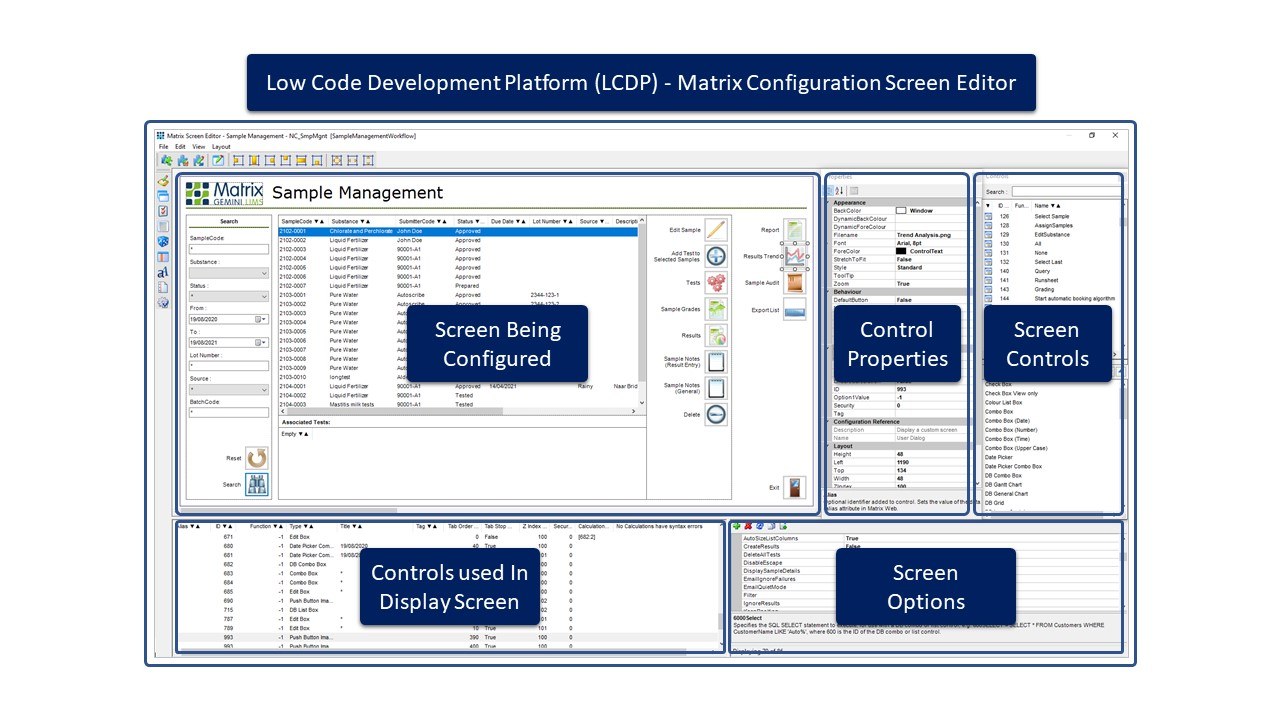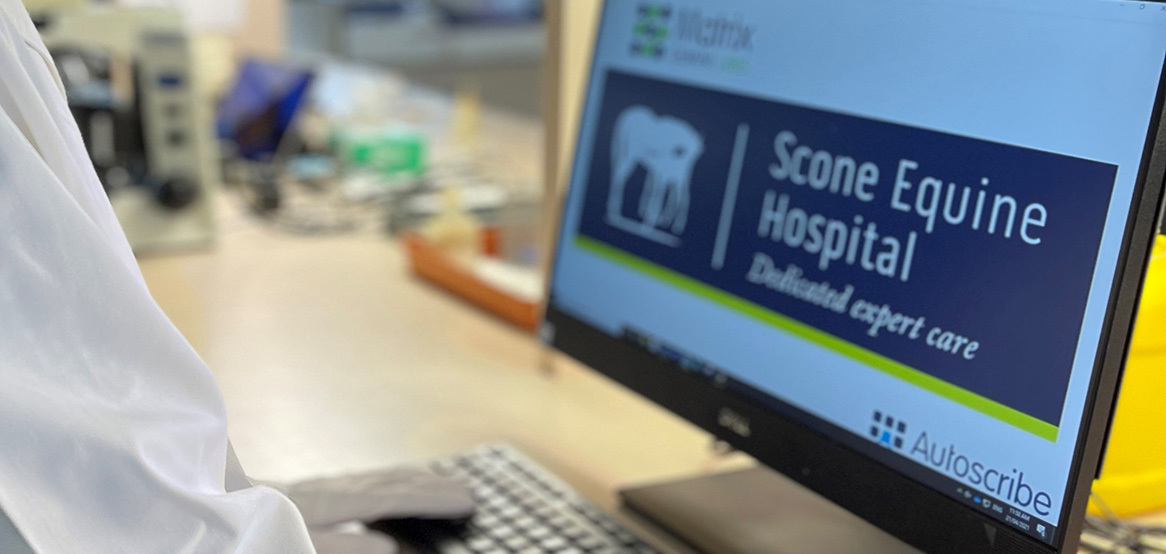Customers Make Use of the Highly Configurable Nature of Matrix Gemini LIMS to Meet Their Diverse Needs
Too often companies implementing multi-site, multi-national, multi-discipline LIMS do so based on the needs of a single lead site. This may potentially ignore the needs of other sites; a mistake that only shows itself when trying to roll out the LIMS solution across the globe. Adopting this strategy can be a mistake because many LIMS are optimized, even specifically created, for one market area (where they are a good fit) but are difficult to adapt to other requirements or application areas.
Clues as to whether this will be the case can be seen in the implementation approach of the various LIMS solutions. Ask whether the systems and their specific configurations will use the same software code, and whether each has the same upgrade path or not. This can be very revealing because different LIMS starter configurations from a single vendor may include specific coded screens (in HTML, Java, or C#) to adapt the base system to the specific needs of users. The divergent nature of the multiple systems means that with every maintenance release the systems tend to become more and more different until they are, in effect, completely different.
Matrix Gemini LIMS is unique in that it contains interactive configuration tools that are used to implement the workflow and screens without touching the underlying code. This unique Low Code Development Platform (LCDP – see LCDP article) approach to LIMS enables Autoscribe, and its customers, to serve multiple market areas with a single solution, making it easier and less costly to maintain over its lifetime.

Figure 1 – Matrix Gemini is configured using Matrix Configuration Tools, a Low-Code Development Platform
Several recently published case studies are testament to this:
Biobank – the Garvan Institute of Medical Research, in Australia, use Matrix Gemini to manage samples for both genomics and stem cell research. They specifically identify ease of use as a major reason for choosing Matrix Gemini. Their Biobank Data Manager said, “I researched various Biobank LIMS, including those in use at institutes nearby, however in the end one of the reasons that we went with Matrix is because the sample registration process is so straightforward in comparison to the other options. We’ve set Matrix up so that it is very intuitive to enter data, which is important for our team.” User friendly systems reduce the barriers to use, are easier to learn and use, and create a more efficient working environment, all important factors when staff are asked to work long hours with software systems.

Clinical Research – the Medical Research Council Unit The Gambia at the London School of Hygiene & Tropical Medicine has implemented Matrix Gemini LIMS for its research into tropical infectious diseases. It has linked the LIMS with its in-house Electronic Medical Records System (EMRS), and multiple scientific equipment/instruments in its three major (core) laboratories to improve the efficiency and performance of their operations. MRCG said, “Matrix Gemini LIMS was flexible enough to meet our broad clinical and biomedical research needs. Matrix Gemini LIMS enables us to extract the management KPIs we need to evaluate and improve our performance over time.” The LIMS allows them to maintain their position as a leading centre for medical research in West Africa.

Veterinary – Scone Equine Hospital, the largest provider of equine veterinary services in Australia, use Matrix Gemini to automate their laboratory processes. The LIMS has particularly helped in their busy breeding season where they need to employ extra temporary staff to manage the peak load. The Laboratory supervisor explains, “We ended up deciding on Matrix due to the flexibility that the system offered. Many LIMS are based around how pathology labs work, which to a degree covers what we do, however we work in the veterinary and thoroughbred industry and our clients have particular requirements on how they like things done. To accommodate that we had to have something more flexible than a traditional LIMS. We felt that Autoscribe could be adaptable in their approach and work with us to actually get what we wanted to meet our requirements.”

Food & Beverage – Ardent Mills has more than 35 community flour mills and blending facilities throughout North America. It implemented Matrix LIMS in just 6 months to improve the efficiency of sample management and tracking within the laboratories. This provided a better service to the mills and improved the data available for making key business decisions. For Ardent Mills having easy access to good data was key, “The use of Matrix Gemini ensures that the laboratory management data is clean.”

Water/Environmental – Culligan Water introduced Matrix Gemini LIMS to streamline sample processing time and increase sample throughput in their busy State of Illinois Environmental Protection Agency accredited laboratory. The new LIMS solution created big efficiency savings for the lab by automating tasks, but Culligan also found Matrix Gemini user friendly, “I think that the flexibility provided by Matrix Gemini is amazing!”

The common thread across these case studies, and we can cite many others, is that without exception they all use exactly the same LIMS software. Customer solutions invariably come from starter systems which are pre-configured to the general needs of an industry area. These include a Regulated Manufacturing starter system that covers Food & Beverage, Pharmaceutical and Medical Devices, and a QC centric starter system that covers Contract Labs and non-batch centric flows. Other specific starter systems include Veterinary, Water, Clinical Research and Covid LIMS testing, often allowing many labs to take out of the box solutions with very little configuration. Configuration of these systems however does not change one line of the LIMS software code. It is all accomplished using the Matrix Configuration Tools that form the Matrix LCDP. This is a “What You See Is What You Get” (WYSIWYG) graphical editor that can be used by Autoscribe or suitably trained users to easily adapt screens to suit the user’s exact needs. As these needs change, as they invariably will, the same tools are used to update the configuration, no matter what version of the underlying software is currently running.
This approach has several advantages. Since all LIMS software is common to all systems, and separate from the configuration, it can be easily updated as new releases become available. This provides a continuous upgrade path for all users allowing them to take advantage of the latest security fixes and technology upgrades without changing their configuration. Support for systems that customers have configured themselves is provided by Autoscribe as part of a standard support contract; this is only possible because the underlying code can never be altered by the user. Finally, the LIMS can be easily adapted to suit a laboratory’s changing needs over time, keeping it in line with business and laboratory changes and innovations.
As we so often hear from our real-life customers, flexibility, ease of use, and maintainability, set Matrix Gemini LIMS apart from all other LIMS in the marketplace today. The fact that any LIMS requirement can be met by the same Matrix Gemini LIMS software, whether for pharmaceutical, medical devices, food, water, veterinary or any other laboratory type, is what sets Autoscribe Informatics solutions apart. This is particularly true for companies with multiple types of laboratories that cover specific and diverse types of testing. With Matrix Gemini LIMS one LIMS can truly cover all your needs.














